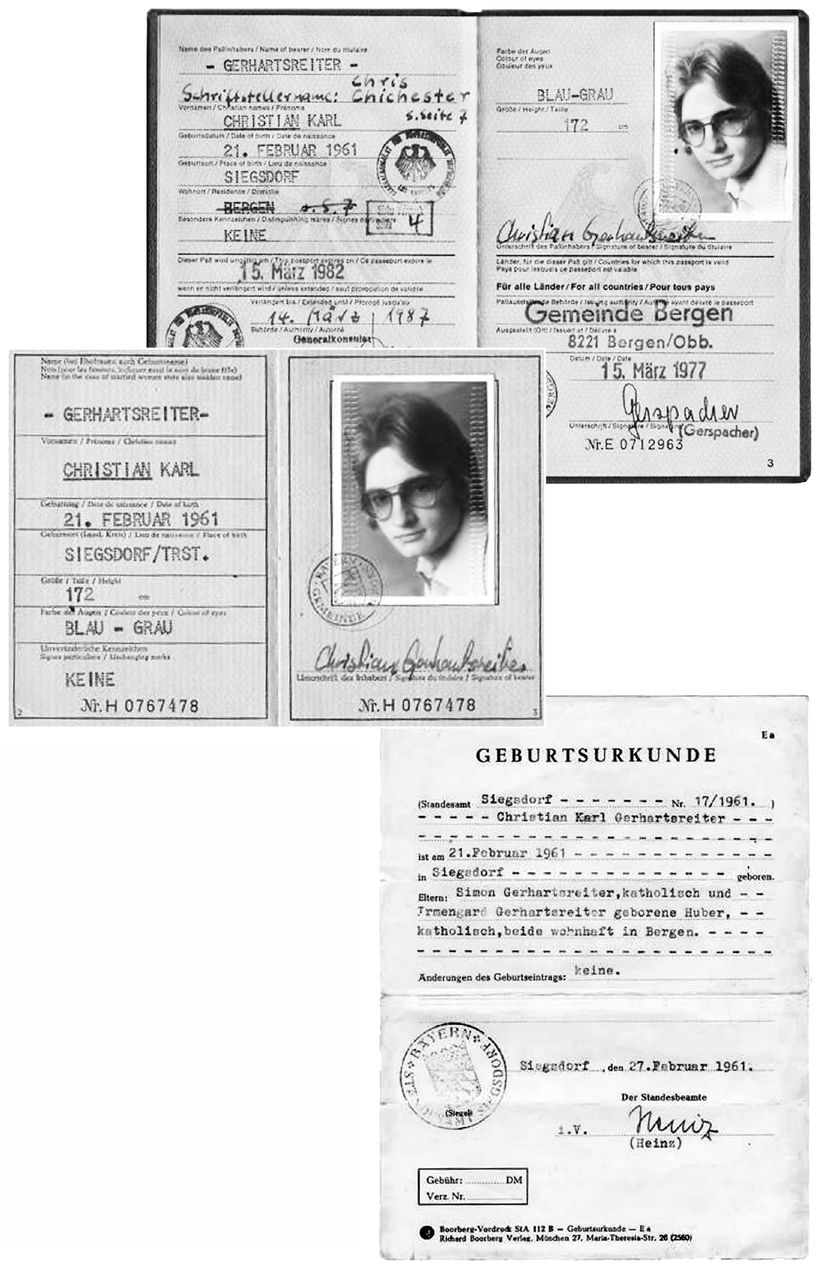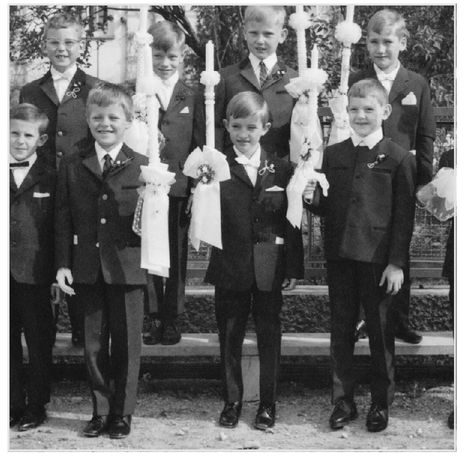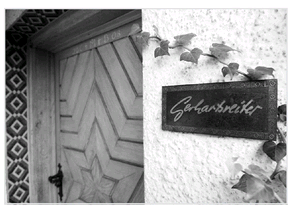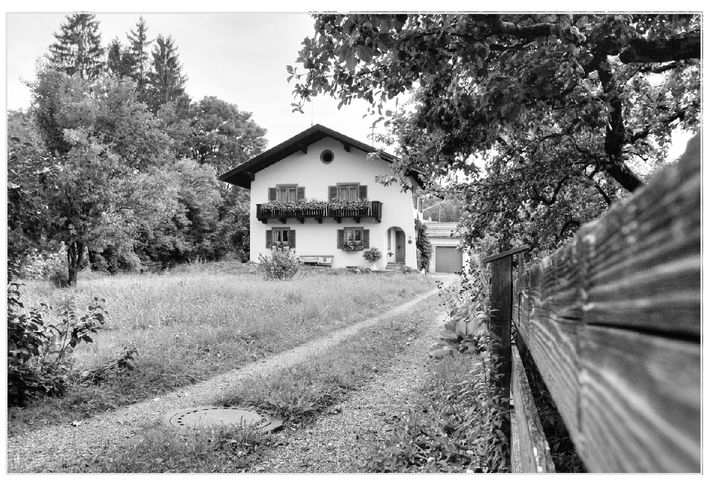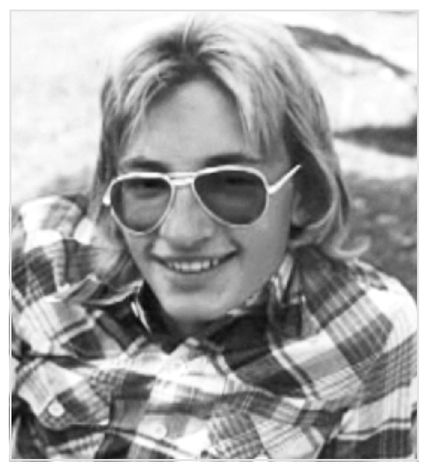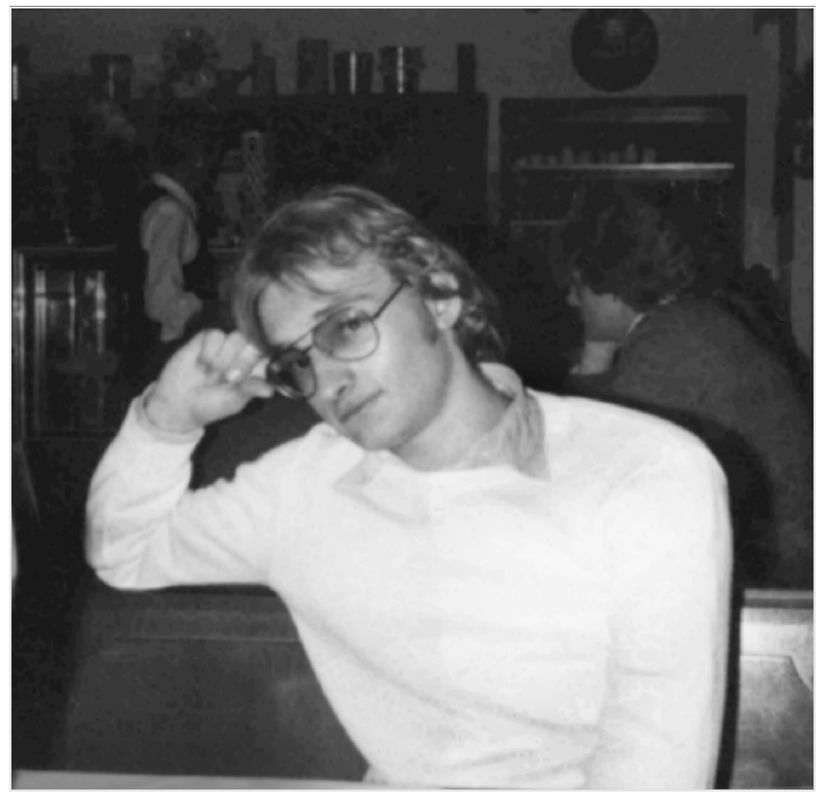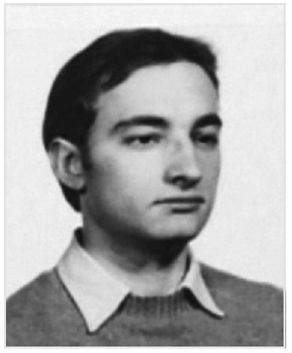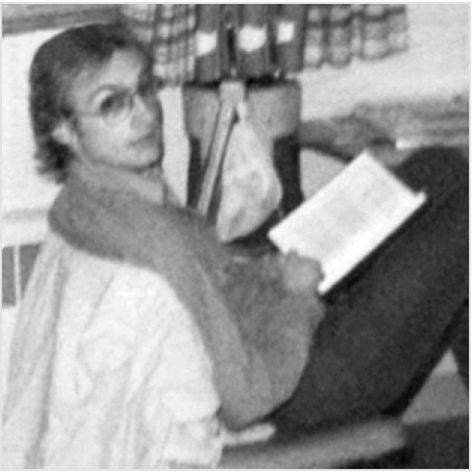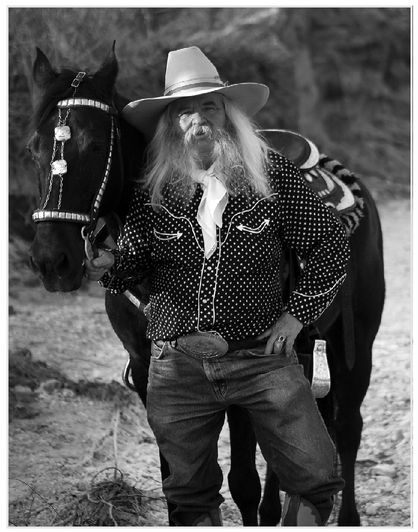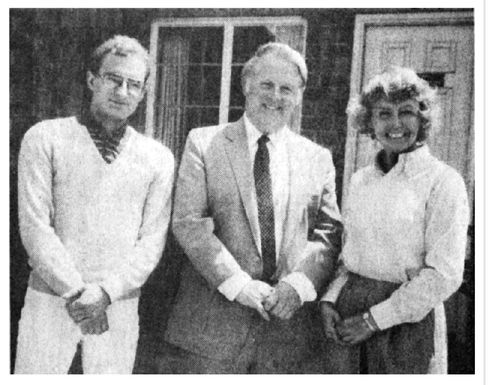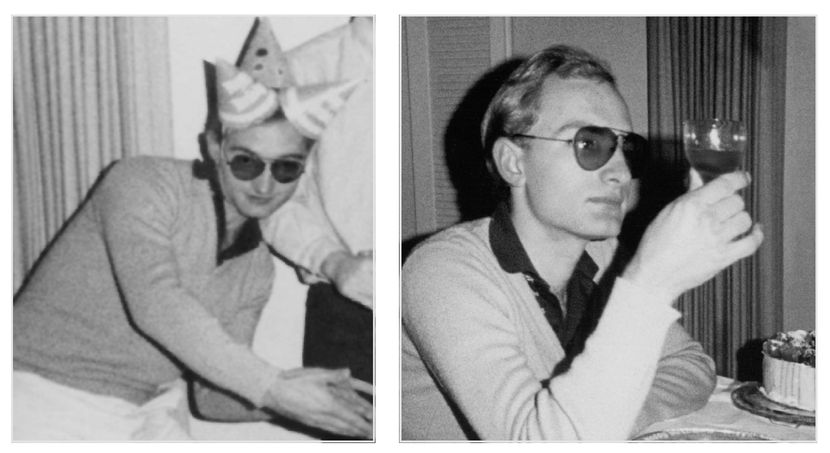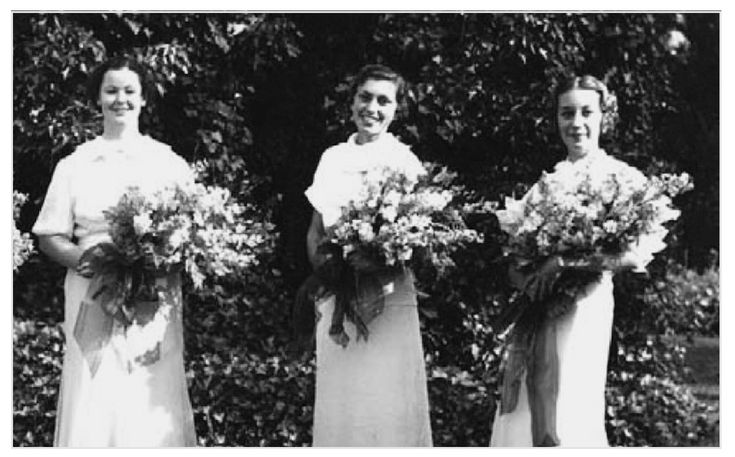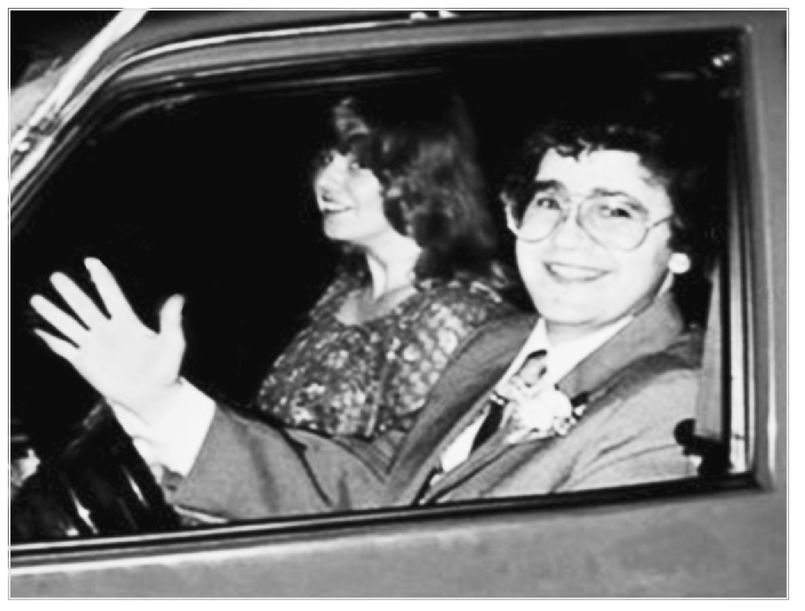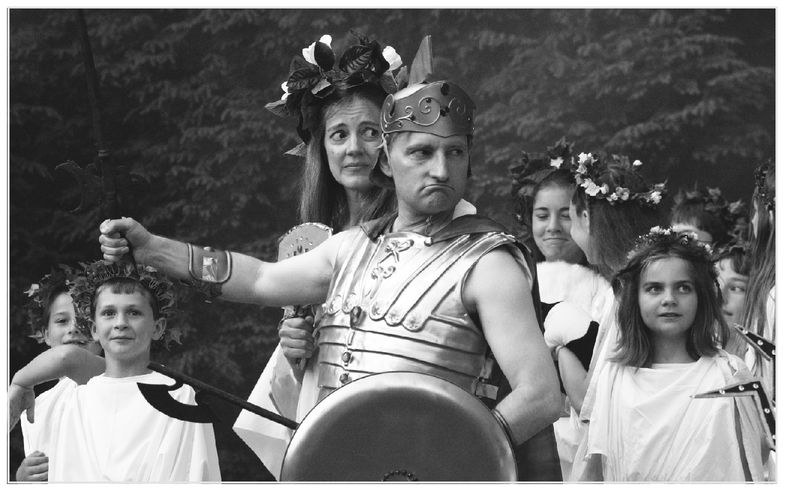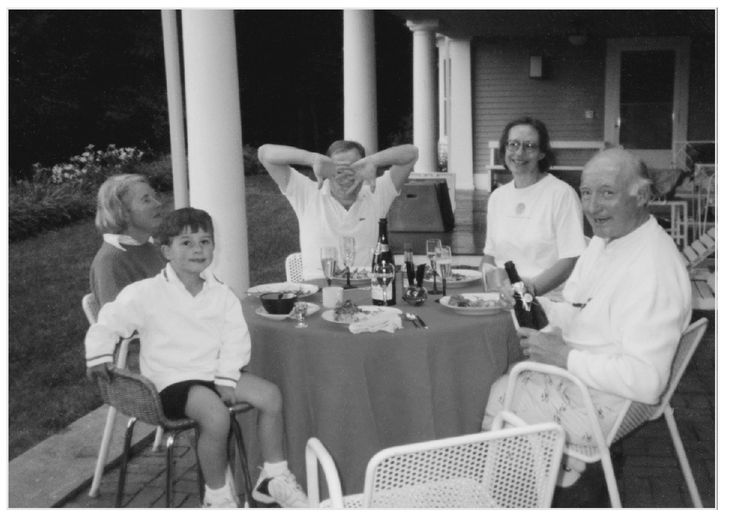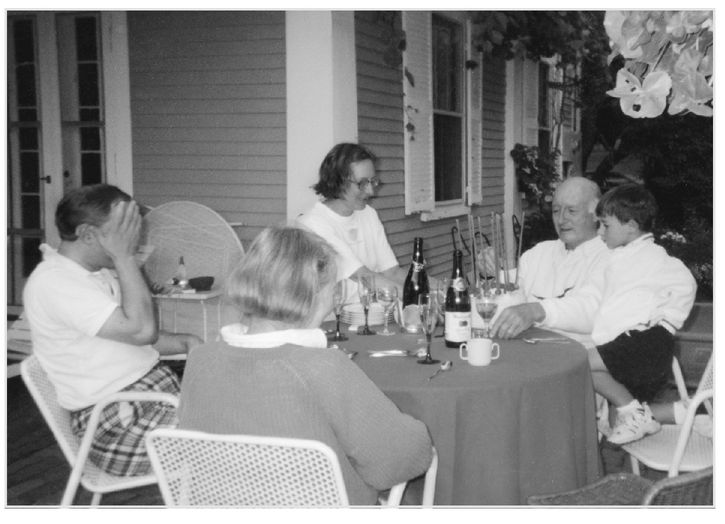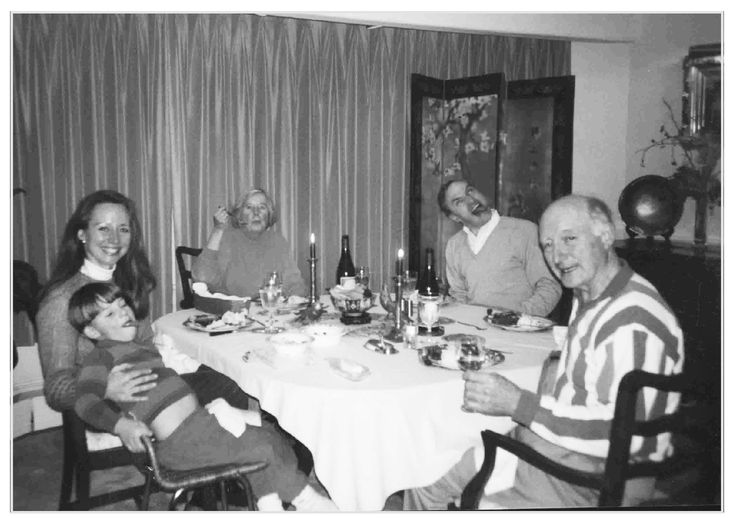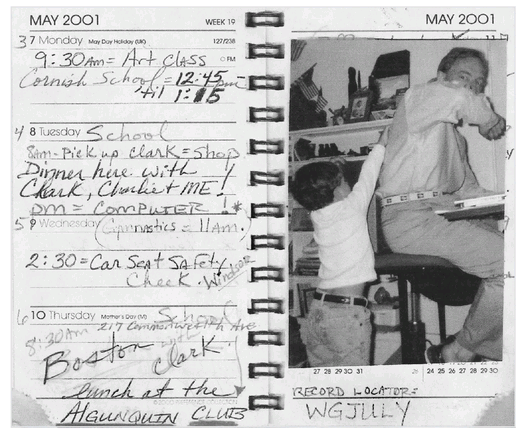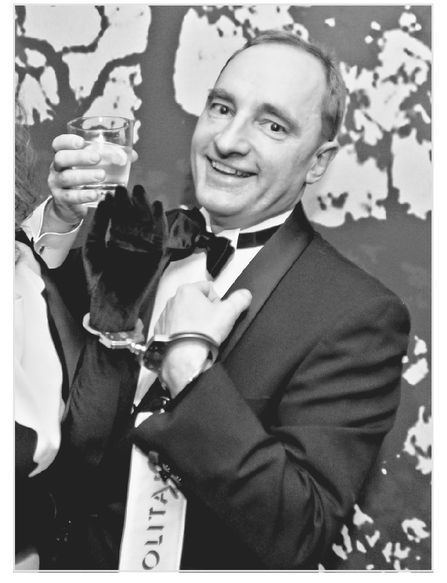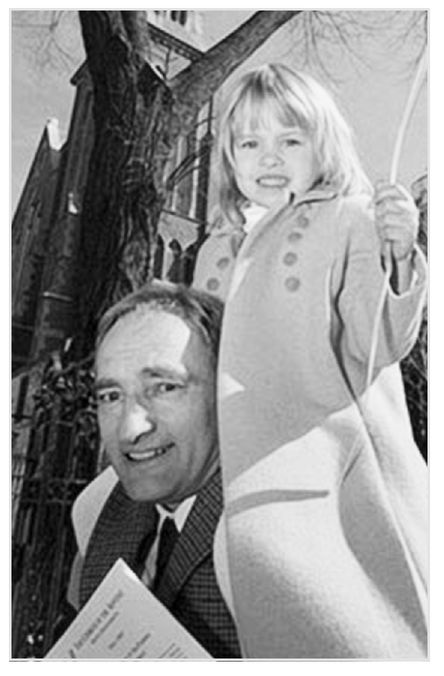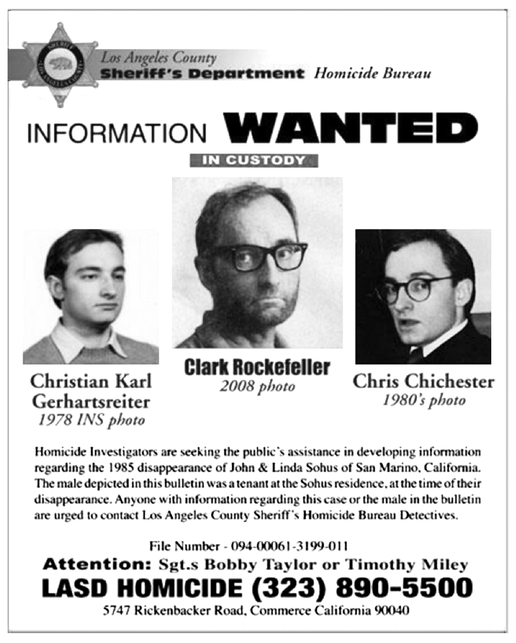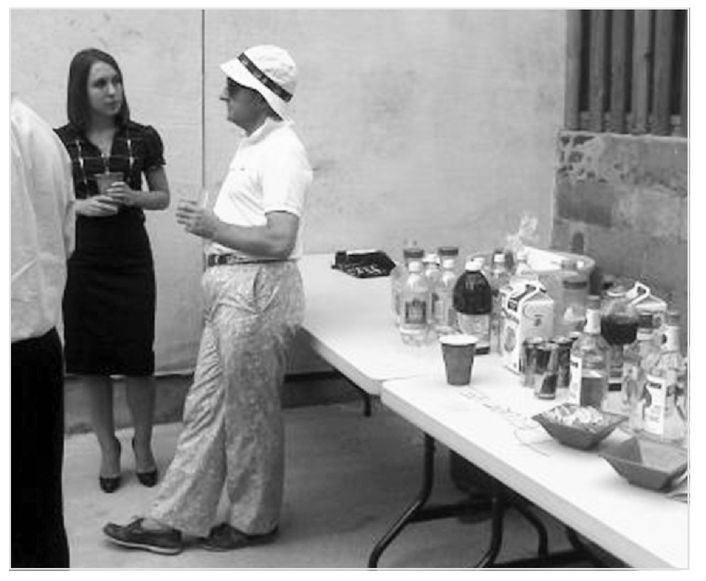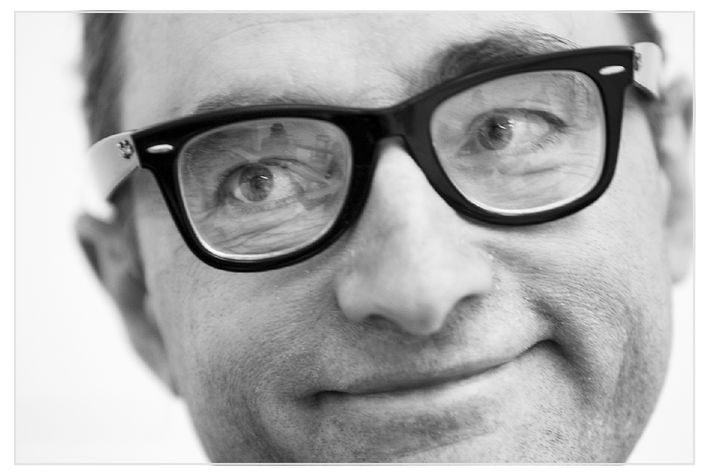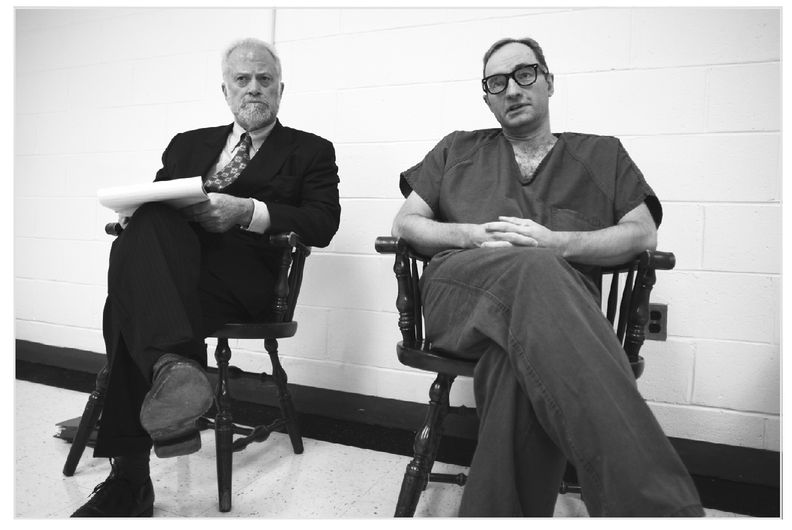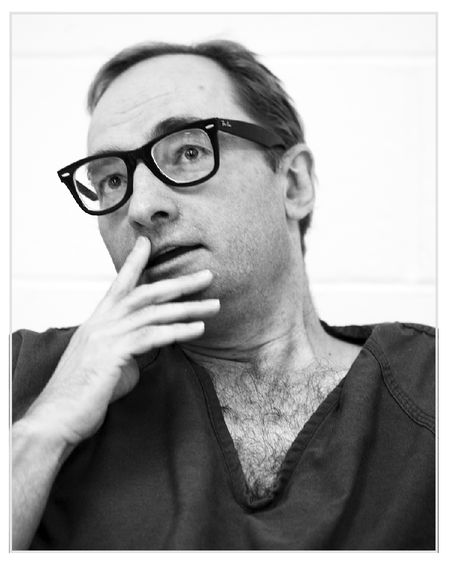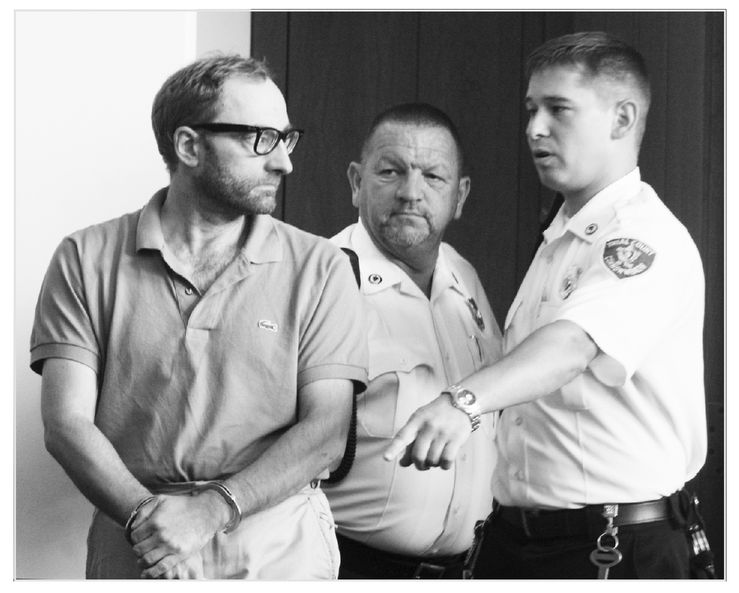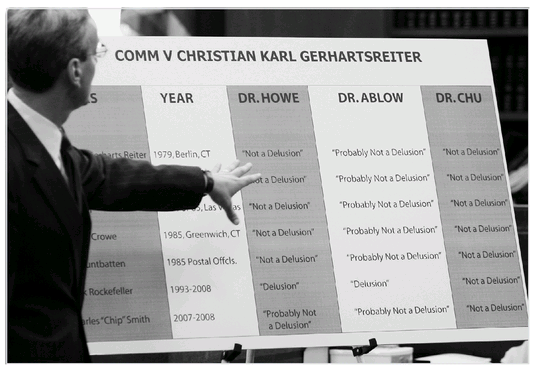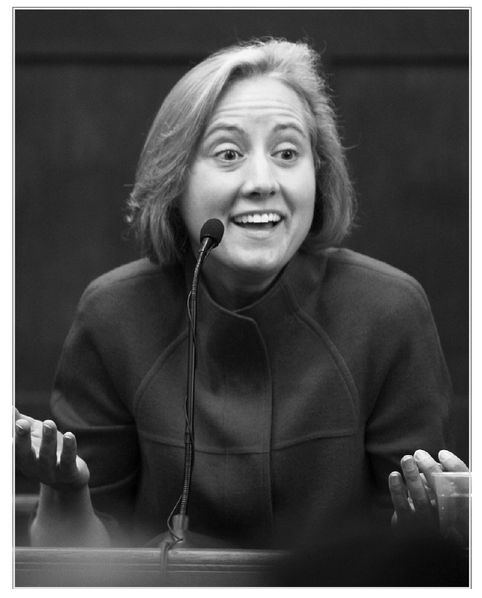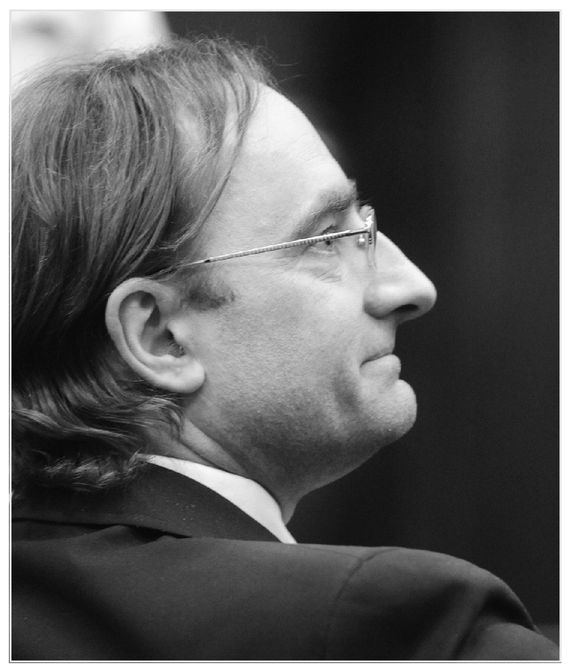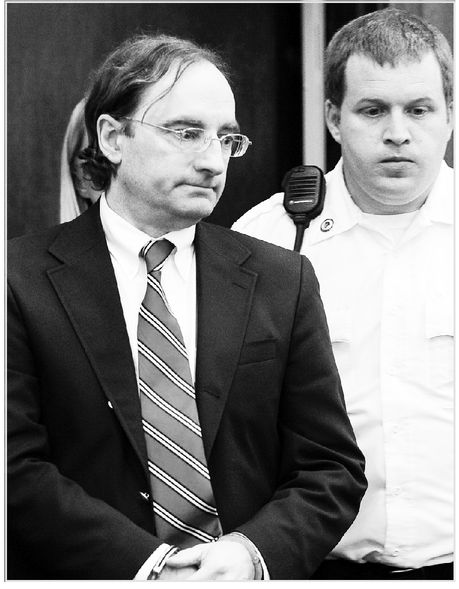Christian Karl Gerhartsreiter, seventeen, arrived in Boston on December 16, 1978. Pictured here: his passport, his resident alien identification card, and his birth certificate. He told his parents that he had gotten a job as a disc jockey in New York City, and they agreed to send him money each month until he got settled. Once he ob tained a tourist visa, he packed up his belongings and flew from Munich to Boston.
Gerhartstreiter stands front and center in a group communion photograph of nine-year-old third-grade boys in Bergen, West Gerany. “That Christian stands in the front may be explained by his body size, or may be by coincidence, though he liked to play the role of a leader whenever possible,” said a classmate.
Bergen looks like something out of a fairy tale, a picturesque hamlet nestled in a verdant valley of the majestic Bavarian Alps. The focal points of the town center are a church and a beer garden. The house where Gerhartsreiter grew up, at 19 Bahnhof (Train Station) Street, was almost the first house off the highway.
“He was always posing,” said a woman who met him when he still lived in Germany. “In his mind, he had to be something someday,” added her husband. “He wanted notoriety.”
Gerhartsreiter arrived at his college dorm with a set of golf clubs and an aristocratic air. “Supposedly, his mother or father was an ambassador,” said his college roommate. “He said he was from Boston.” To buttress his Boston background, he would eat a Boston cream pie every single day, added another college acquaintance.
This U.S. Immigration and Naturalization Service photograph shows Gerhartsreiter on his 1978 arrival in the United States. After landing in Boston, he traveled to the small town in Connecticut that was home to a high school student who had met the friendly German on a train while traveling through Europe on a Eurail pass the summer before.
“He said to people he was from royalty in England and that his name was Christopher Chichester,” said the Swedish cowboy hairdresser Jann of Sweden, shown here in his cowboy regalia. “Every time he meets a lady, he takes her hand and kisses it be fore he presents himself. These ladies were thinking Chichester was sent by God or something.”
This clipping from the San Marino, California, newspaper shows Christopher Chichester as the producer of the local cable TV show Inside San Marino. Also pictured is the show’s host, Peggy Ebright.
SACRAMENTO CONNECTION. Assemblyman Richard Mountjoy will be the featured guest on the May 29 edition of “Inside of San Marino,” scheduled for 7 p.m. on American Cablevision Channel 6. Above, Mountjoy (center) discusses the program’s format with producer Christopher Chichester and moderator Peggy Ebright. Mountjoy represents the 42nd District, which Includes San Marino, and is one of the state’s leading conservatives. On the cablecast, Mrs. Ebright asks him about reapportionment, legislative reform, the school finance bill and his grassroot political beginnings.
Christopher Chichester became a well known presence in San Marino. Not only was he an in demand man about town, popular with the city’s wealthy widows, he also posed as an aspiring film student, telling some he was a teacher’s assistant at the prestigious University of Southern California film school. Here, he’s seen partying with friends.
Ruth Detrick “Didi” Sohus (top photo, far right) was a former debutante. She and her third husband adopted a son, John, who was something of a loner before he met the woman who would become his wife: the redheaded, part–Blackfoot Indian Linda Mayfield. Standing over six feet tall and weighing more than two hundred pounds, Linda dwarfed John, who stood five feet five. The couple are shown in the bottom photo, on the day of their wedding.
“I don’t know why he came up here,” said a local in Cornish, New Hampshire, where Rockefeller turned a historic home into a never-ending construction project. “I guess he wanted to be in the sticks. He said he was looking for a place he could do a lot of fixing up.” The house was blocked off with a heavy chain and surrounded by signs reading KEEP OUT, CAUTION, and BEWARE OF DOGS.
“As I recall, he played Mars, and his daughter played a nymph,” said a representative of the Saint Gaudens Historic Site in Cornish. The god of war was an appropriate role for him, because by that time Rockefeller was fighting with many of the locals.
Above and on facing page: These snapshots were taken by Laura White, who became one of Rockefeller’s best friends in Cornish, showing him at the White family dinner table. Also pictured is a page from White’s diary with references to “Clark.” At Clark’s side is White’s young son, Charlie. “He was the most exciting thing to happen around here in a long time,” said White’s mother.
“He hated to have his picture taken,” recalled Laura White. In nearly every photograph Rockefeller was striking a pose that disguised him.
Although Rockefeller wouldn’t allow photographers to take his picture at most of the Boston social events he attended, he struck a pose here at an event at the Liberty Hotel, in a building that was formerly the venerable Charles Street Jail. It was prophetic that many of the guests, including Rockefeller, sported toy hand cuffs, in keeping with the hotel’s refurbished-jailhouse theme.
By the time of their arrival in Boston, Rockefeller said, his daughter, Reigh “Snooks” Rockefeller, was a proficient reader; she could read aloud from the scientific journal Nature when she was three. He said he had once read Tennyson’s poem “The Daisy” to her twenty five times in a single evening. She not only understood the poem, she loved it.
For investigators, the missing persons case had been fraught with witnesses’ dying, district attorneys’ leaving their jobs just as they had begun to make progress, and detectives’ becoming frustrated with the labyrinthine case and moving on, allowing the “person of interest” not just to remain free but to climb the social ladder in the shoes of a Rockefeller.
“Chip Smith,” ship’s captain, became a welcome regular presence in the offices of Obsidian Realty in Baltimore. Sure, he was a bit odd, in his salmon colored pants and his boat shoes, always worn without socks. But he was a client, and at Obsidian the client is king. They let him use their computers. They even gave him his own key to the office. Eventually, they sold him a house at 618 Ploy Street. In the house, pictured at bottom, investigators would find the elements of his latest identity.
In the early days after his arrest, Rockefeller projected a sense of cool control, appearing unruffled in front of the cameras in two media interviews he granted, one to the Today show and the other, in this photograph, to the Boston Globe.
The lawyer Rockefeller first chose to represent him was the veteran Boston criminal attorney Stephen Hrones, pictured here. As the media storm grew, Hrones encouraged him to keep talking. “Fight fire with fire,” Hrones later said. “We had to get out and tell his side of the story, emphasize the loving father aspect. I pressed that at every point: how can you kidnap your own child?”
“He burst into the room smiling, with the cheerful demeanor of a host welcoming guests to a party,” wrote a Boston Globe re porter. “‘Clark Rockefeller,’ he said, fixing his gaze on a visitor and extending a hand. His nails were manicured. He wore tasseled loafers with his jail-issued scrubs. He turned to another visitor and another, bowing slightly to each. ‘Clark Rockefeller, Clark Rockefeller,’ he said in a Brahmin accent. ‘Nice to see you. How are you, everyone?’”
At Rockefeller’s first court hearing in Boston for his arraignment on August 5, 2008, he still wore the preppy clothing he had always worn during his life as a Boston bon vivant. But the pressure of being on the run showed in his face and scruffy appearance.
During the trial, the prosecutor, David Deakin, grilled witness after witness on Rockefeller’s state of mind at the time of the kidnapping. Here, Deakin presents a chart showing the expert witnesses’ findings about the defendant’s mental state.
Throughout her testimony, Rockefeller’s wife of twelve years, the extremely poised and ever collected Sandra Boss, spelled out how she could have been duped by someone like Rockefeller, de spite her being an undoubtedly highly intelligent career woman. “One can be brilliant and amazing in one area of one’s life and really stupid in another,” she said. Although repeatedly grilled by the defense on how she could believe the monstrous lies her ex-husband had told her, she held firm to her convictions while also making clear the pain she had endured after her daughter’s kidnapping.
As his trial came to a close, the Clark Rockefeller who had greeted investigators and reporters as a gentleman of wealth and taste—holding forth as if he were hosting a party even while incarcerated—turned mute, pale, and ghostly in court. It was as if after a lifetime of lies, he had finally run out of stories to tell.
